Emission Control
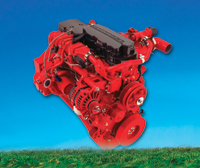 The 21st century will be defined as the green generation. In nearly every social and industrial sector, a growing global self-awareness can be found, focused on balancing sustainability with the way human society works and lives within the Earth’s ecosystem.
The 21st century will be defined as the green generation. In nearly every social and industrial sector, a growing global self-awareness can be found, focused on balancing sustainability with the way human society works and lives within the Earth’s ecosystem.
With a keen eye on a cleaner future, the construction manufacturing industry is also pushing forward with producing eco-friendly machines — especially cleaner burning diesel engines for the construction, landscape and agricultural industries. From compact skid steers to enormous haul trucks, government-issued Tier emission standards are mandating that machine engines (from OEMs like Cummins and Caterpillar) produce far less pollution — particulate matter (PM), oxides of nitrogen (NOx) and carbon monoxide (CO) and hydrocarbons (HC).
These emission regulations — called Tier standards — were created by the Environmental Protection Agency (EPA) more than a decade ago for both off- and on-highway diesel engines; each sector has similar standards and deadlines. For the construction industry, off-highway diesel engine Tiers are coming to a head as the final and most stringent set of regulations (called Tier 4) are already here for small diesel engines. The 25- to 74-hp power band hit Interim Tier 4 in 2008 and the Final Tier 4 standards for all horsepower ranges are fast approaching in 2013 through 2015.
Luckily, diesel designers are already prepared to achieve these new emission standards today — taking the opportunity to not only tweak the way that engines expel pollutants, but also how they can increase efficiency and power for the end-user. The next generation of clean diesel power plants is nearly here.
“The EPA has estimated that Tier 4 implementation across all power ranges will reduce the U.S. annual emissions inventory by hundreds of thousands of tons of PM and NOx and make a major contribution to improving the air quality of the nation,” explains Clint Schroer, off-highway communications manager for Cummins Inc. (one of the pioneer makers of diesel engines starting in 1919). “But we also remain focused on providing outstanding customer value while meeting these tough emission standards. We have invested significantly in a broad technology portfolio that extends from air intake to exhaust after-treatment systems. This technology base, which enables us to focus on achieving a low initial cost for the OEM and the lowest cost of operation for the equipment owner, will result in delivering improved fuel economy and higher power outputs along with a cleaner burning engine.”
Getting Standard
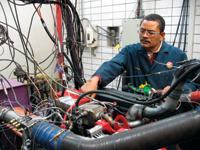
The U.S. EPA was created in 1970 under President Richard Nixon, charged with protecting human health and safeguarding the natural environment. But it wasn’t until 1994 that the first federal standards for new off-highway or non-road diesel engines were adopted for engines more than 50 hp (37 kW) to be phased in from 1996 to 1999. Today, the EPA only regulates 0.3 percent of an engine’s total product of complete combustion. The rest (99.7 percent) of the engine exhaust is made up of natural elements in the air such as nitrogen, oxygen and water vapor.
“The primary focus of the Tier standards is the reduction of the oxides of nitrogen and particulate matter. For Tier 4, NOx and PM will be reduced by more than 90 percent when compared to current Tier 3 emissions regulations,” says Doug Laudick, product manager at John Deere Power Systems, a company with more than 90 years of off-highway engine experience.
Tier 1 standards for equipment under 50 hp and increasingly more stringent Tier 2 and Tier 3 standards for all equipment had a phase-in schedule from 2000 to 2008. The first three emission standards were generally met by using advanced engine designs such as electronic controls, high-pressure fuel systems, new turbocharger designs, air-to-air aftercooling and in-cylinder solutions to control pollutants, with no or only limited use of exhaust gas after-treatment systems. This meant little or no redesign of the outside envelope of the engine. But with Tier 4, after-treatment systems will be added to the engine to further control NOx and PM pollutant levels.
“Increasingly stringent emissions regulations drive the need for increasingly complex engines,” Laudick says. “While the emission regulations for each power category are different, it is likely that nearly all will require some sort of after-treatment to achieve Tier 4. Changes to the base engine and the addition of after-treatment may mean that OEMs will need additional time to adopt these next-generation engines. In anticipation, John Deere has communicated our technology choices earlier and well in advance of the regulation compliance date.”
There are two deadlines for Tier 4 off-highway diesel engines — Interim and Final. The initial Interim standards deal with PM compliance, while the Final standards deal with NOx and HC compliance. For engines 25 to 74 hp, Interim Tier 4 has already started, and because the regulations vary by horsepower, different engines will require different technologies. For example, the John Deere 2.4L PowerTech M and PowerTech E, both rated between 25 and 74 hp, are already Interim Tier 4 compliant, but they do not use the new after-treatment technologies discussed in the sidebar below.
Most diesel engines emission reductions for 74 hp and below are using advanced in-cylinder combustion systems without the need for exhaust after-treatment for that power band. It’s the bigger diesel power plants (75 to 751 hp) that will see the latest new emission gizmos.
“The most stringent reductions apply across the 174- to 751-hp power categories with 90 percent PM and 45 percent NOx reductions,” says Schroer. “At Tier 4 Final, NOx emissions are reduced by a further 45 percent to bring a total NOx reduction of 90 percent compared to Tier 3.”
This chart shows the timelines of all three power bands:
|
|||||||||||||||
After-Treatment Technologies
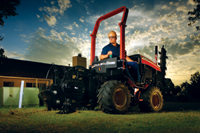
“We expect to see the introduction of systems such as diesel oxidation catalysts, depending on horsepower band. We will certainly see the introduction of enhanced technologies, both internal and external to the engine, to reduce NOx formation and PM,” explains Tim Cresswell, product marketing manager at Perkins Engines (a designer and manufacturer of high-performance diesel engines for 75 years).
“It is the advent of such after-treatment systems that will be the most evident and physically challenging in terms of engine packaging. Diesel particulate filters and the accompanying filter regeneration equipment will add to the overall installation volume. A typical particulate filter assembly, though hugely efficient, potentially carries a significant weight and size penalty, causing a rethink for OEMs when it comes to equipment design.”
It seems each manufacturer is turning to a number of these technologies to most efficiently reduce emissions and please customers, but there is a prominent VHS/Beta battle of two main technologies — SCR and EGR. Selective catalytic reduction or SCR is a technology that uses a urea-based solution to reduce NOx. The urea solution is mixed with engine exhaust gases in the catalytic converter turning the NOx to oxygen, nitrogen and water. SCR is already used in European truck and car engines, and some U.S. manufacturers have announced that they will begin using the technology in on-highway engines beginning in 2010 (Detroit Diesel and Freightliner for example).
But most North American companies seem to be turning to cooled exhaust gas recirculation (EGR) strategies, which lowers an engine’s peak combustion temperature to lower NOx output. Both sides have made compelling arguments. The EGR camp says that SCR requires additional components and is overly complex; also, urea may not be widely available in the Tier timeframe and SCR is unproven in North America.
While not many companies have announced they will use SCR technology in North America as of yet, Tognum subsidiary MTU Detroit Diesel unveiled at CONEXPO-CON/AGG its Tier 4 Interim compliant Series 900 engines outfitted with SCR technology. Plans call for both the Series 900 (120 to 322 bhp) and Series 500 (349 to 644 bhp) engines to use SCR to meet the Tier 4 Interim standards that take effect in 2011.
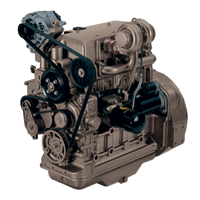
“An SCR system injects liquid urea into the exhaust stream to reduce NOx. While this is effective, it also requires that the vehicle or machine be fitted with a separate tank, a sophisticated urea injection system and an EPA-required, tamper-proof diagnostic system,” explains Laudick. “Because urea freezes, heating systems for the tank and delivery lines are required. In addition, urea is not conveniently available in most parts of the world at the present time, which creates access and storage concerns. SCR may be an appropriate technology for Final Tier 4 regulations, when the technology is more developed for off-highway applications.”
But companies like MTU Detroit Diesel believe that the adoption of SCR technology could be the best overall solution.
According to Bryan Mangum, marketing and communications manager at MTU Detroit Diesel: “Urea is a common substance that is easily made, non-toxic and requires no special handling. We believe infrastructure will be quickly built out, and we will also be able to fully support our customers through our own extensive North American distribution network. With regards to gelling temperature, urea’s is about the same as diesel’s, so keeping urea flowing is no more of a challenge than keeping fuel flowing.
“That fact is that none of these new technologies are without their challenges,” continues Mangum. “MTU has experience with all of them and our philosophy is to match the best technology to the needs of each specific engine. In the case of our Series 500 and Series 900 engines, SCR was the optimal solution. It is a cost-effective means of preserving the engines’ inherent fuel efficiency and will require no major changes to engine design. SCR also does not increase heat rejection, which can be a major problem with other emissions control technologies.”
How Does This Affect Me?
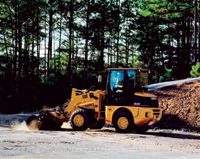
But these newer, better, cleaner-burning engines will most likely cost more to purchase and will have extra maintenance, though manufacturers are trying to offset some of those costs with extra goodies.
“In broad comparison terms to Tier 3, clearly the introduction of Tier 4 will bring unavoidable cost increases with the addition of exhaust after-treatment and enhanced engine technology. In the end, Tier 4 equipment pricing will be determined by the OEM,” says Schroer. “However, with up to 5 percent fuel-efficiency saving from Cummins Tier 4 engines, depending on rating and duty cycle, this will reduce the cost of operation to help offset equipment cost increases for Tier 4.”
Future engine designs will not just include an upgrade in engines, but will require an evolution of some fuel systems and cooling systems needed to effectively offset the high temperatures that are required to burn off NOx exhaust. Redesigning these cooling systems will require larger fans and more openings to cool engines, which could mean machines running louder and being less fuel efficient.
For the most part, day-to-day maintenance between Tier 3 and Tier 4 engines will remain unchanged, say most manufacturers — just a few extras. Cummins Tier 4 engines will incorporate a coalescing crankcase filter to meet EPA regulations, which requires the elimination of crankcase emissions, also known as blow-by gasses. A quick, simple replacement element change is required at 2,500-hour intervals for the filter.
John Deere noted that its maintenance of new engines will be comparable to its current product, but there are some additions — like cleaning out the ash from a DPF unit — a diesel particulate filter that traps soot in the exhaust.
“The DPF will require servicing after approximately 5,000 hours of use,” notes Laudick. “However, this DPF service can be scheduled to coincide with other engine maintenance to maximize uptime. John Deere Interim Tier 4 engines below 75 hp do not use after-treatment devices, so maintenance schedules for these engines remain unchanged.”
MTU Detroit Diesel noted that refilling of urea will be needed and can be done at the same time the equipment is refueled. “The use of SCR actually reduces fuel consumption, so the total consumption of fluids — fuel and urea combined — remains about the same,” says Mangum.
Non-road diesel fuel will also be changing. From Tier 1 through 3, the sulfur content in non-road diesel fuels was not limited by environmental regulations. But to enable sulfur-sensitive control technologies in Tier 4 engines — such as catalytic particulate filters and NOx adsorbers — the EPA mandated reductions in sulfur content in non-road diesel fuels.
“In meeting the 2011 emissions requirements, diesel fuel is a critical part of the solution. Ultra-low sulfur diesel [ULSD] is necessary for most after-treatment technologies as high levels of sulfur will be detrimental to the after-treatment and may not be emissions-compliant due to the increased production of sulfates,” Schroer says.
“The automotive market in North America introduced ULSD fuel ahead of the EPA 2007 regulations. With the infrastructure already in place, this will ease the transition to 15-ppm sulfur content diesel for the off-highway market. The introduction of ultra-low sulfur diesel fuel provides other beneficial effects beyond ensuring effective operation of after-treatment. It inherently produces less PM from combustion and will also enable a major reduction in sulfur dioxide [SO2] emissions from off-highway engines.”
The EU will introduce ultra-low sulfur diesel fuel in 2009 ahead of Europe’s Stage IIIB emission standards in 2011. In Japan, ULSD fuel is already available for on-highway and some specialized off-highway applications.
Keeping all of these technologies in mind, readers of Compact Equipment must remember that Tier 4 changes are not by types of machines, but instead by the horsepower bands. Compact equipment 74 hp and below already has to meet Interim Tier 4 regulations, which went into effect in January 2008. For the 75- to 174-hp power-band, Tier 4 Interim will take effect in January 2012.
NOTE: However, manufacturers are given the option to move to Interim Tier 4 in 2008 or opt to skip Interim Tier 4 and go straight to Final Tier 4 in 2012 , which is a year earlier than if the manufacturer opted to go to Interim Tier 4 in 2008. If the manufacturer met the Interim Tier 4 regulations in 2008, they move to Final Tier 4 in 2013.
Keith Gribbins is managing editor of Compact Equipment, based in Peninsula, Ohio.
Tier 4 Technologies
Brush Up on the Technological
Lingo for Ultra-Low Emission Levels
By Doug Laudick
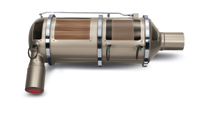
4 can be overwhelming, especially the various implementation dates and
all the new technologies. And even though it’s probably not necessary
to know all the details, there’s plenty of overlap between
technologies, particularly with John Deere engines so it’s important
for the compact equipment buyer to be informed regarding what these
emissions-reducing technologies do and how they affect engine
performance.
- Cooled exhaust gas
recirculation (EGR): EGR cools and recycles a portion of the exhaust
gas back into the intake air. This reduces combustion temperatures,
which in turn reduces oxides of nitrogen (NOx). - Variable
geometry turbocharger (VGT): Variable-angle vanes enable precise
control over the speed of the exhaust-side turbine. In conjunction with
the electronic control unit (ECU), the VGT provides flexibility in
maintaining or improving engine performance — especially transient
response, power density, low-speed and peak torque and fuel economy —
and reducing emissions. - Diesel
oxidation catalyst (DOC): A DOC reduces emissions through the chemical
oxidation of carbon monoxide and hydrocarbons. It is also an essential
element in the elimination of accumulated particulates and/or soot in a
particulate filter. - Diesel
particulate filter (DPF): A DPF traps and holds particulates in the
exhaust stream. These trapped particles are periodically cleansed from
the filter through an oxidation process known as regeneration.
Regeneration does not require adjustments to equipment operation or
operator intervention under normal circumstances. - Selective
catalytic reduction (SCR): SCR is an aftertreatment technology for
reducing NOx emissions. Typically, a liquid urea solution is injected
into the exhaust stream reacting chemically to reduce NOx.
Doug Laudick is a product manager with John Deere Power Systems, based in Waterloo, Iowa.

Comments are closed here.